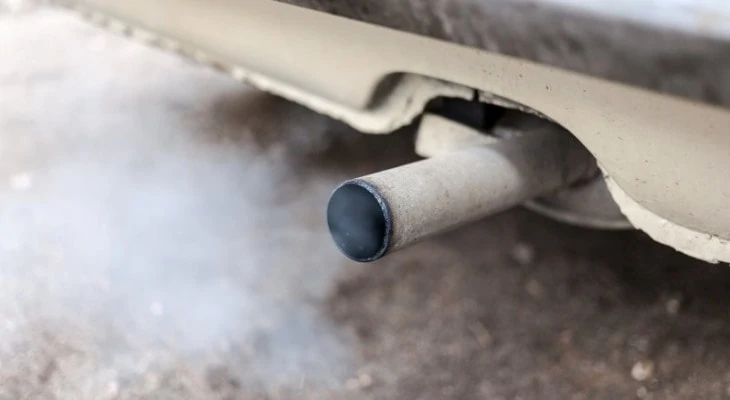Seeing smoke coming from your exhaust can be seriously nerve-wracking. Did you know the color of the smoke can be an indication of what’s wrong? Here’s what you need to know about white smoke in particular coming from your exhaust.
White smoke coming from your tailpipe is a telltale sign of an internal coolant leak in your engine. There are other cases where white smoke may be from a recently replaced exhaust part or catalytic converter that is still breaking in. During cold weather, it’s normal to see some extra vapor, but it should dissipate quickly.
Table of Contents
What Makes the Smoke White?

Lots of chemicals come out of your exhaust when you drive. Because of the way they burn and are processed by the engine and exhaust, you usually can’t see them. Anything being burned in your engine will make its way through your exhaust.
Don’t forget, anything going through your exhaust that shouldn’t be there will cause damage and possibly destroy the catalytic converter. They can be extremely expensive, so don’t let the smoke go unchecked for too long.
Lots of thick white smoke usually means a coolant leak. This is not just any leak, but an internal engine coolant leak. When coolant is burned in the combustion chamber, it vaporizes and becomes white smoke.
Causes of Internal Leaks
This list is usually not good news. Diagnosis can be difficult and repairs can be expensive. The reason for this is that the engine will usually need to be at least partially disassembled to correct the problem.
Worn head gaskets are the most common cause of burning coolant. This gasket is responsible for sealing the cylinder heads to the engine block. Both coolant and oil can enter the cylinder and be burned if there is a weak spot in the gasket.
Certain intake manifolds and most modern throttle bodies have coolant passages that may pose problems. Depending on how your engine was designed, there may be other gaskets or components that could fail and allow coolant to enter the combustion chamber.
If there is serious internal damage like a cracked cylinder head or block, coolant is bound to get burned at some point. If the heads or block are warped, similar issues will occur.
Repairs to correct a blown head gasket or issues with the cylinder head and block can become very costly and difficult. Be sure to have a well-known repair shop take a look.
What to Look For

If you’re not sure about the smoke you see, you can take a look at your dipstick. Most of the time when there is an internal coolant leak, it will also get into the oil.
Check the dipstick and under your oil cap. You can even drain the oil if you are planning on doing an oil change, too. If the oil looks very frothy (almost like a milkshake) and has the color of your engine’s coolant mixed in with it, there is definitely an internal leak that needs to be fixed as soon as possible.
New Exhaust Parts
On a happier note, smoke from the catalytic converter or exhaust isn’t always bad. When you get a new exhaust part, they are often coated in an anti-rust material. With regular use, the exhaust gets hot and burns this material off.
This can cause smoke to come from the tailpipe, and you may notice a burning smell. There can also be smoke coming off the pipe or catalytic converter itself. This is all completely normal with new exhaust parts and should resolve within a week or so of normal driving.
Cold Weather and When to Take It to the Shop
When it’s cold out you will usually see some extra vapor or smoke-like clouds coming from the exhaust. This is especially true for cold start-ups. When this happens it should quickly disappear, and it will become less pronounced when actually moving or once the car is warmed up.
If when driving down the road you can see a trail of white smoke where you’ve been, this is not normal, no matter how cold it is. When it’s this bad it’s time to get the car inspected to find the issue.
Once you’ve confirmed it’s definitely smoke and not vapor or condensation, don’t let it go on for long. It will cause even more damage if the engine overheats, and could leave you stranded. Add the proper coolant if necessary and keep an eye on your temperature gauge, it could save you a lot of headaches.

